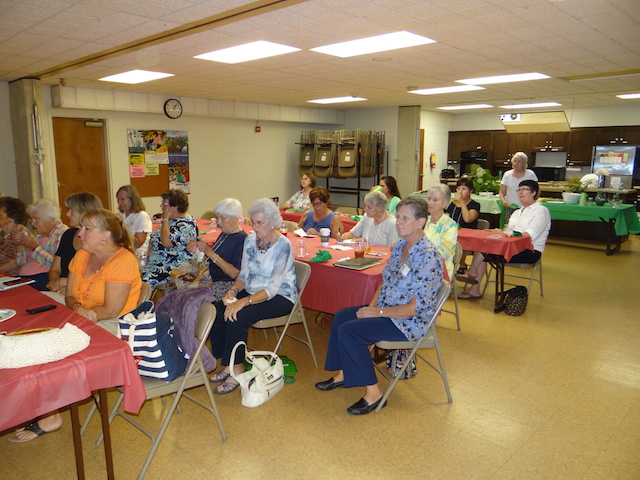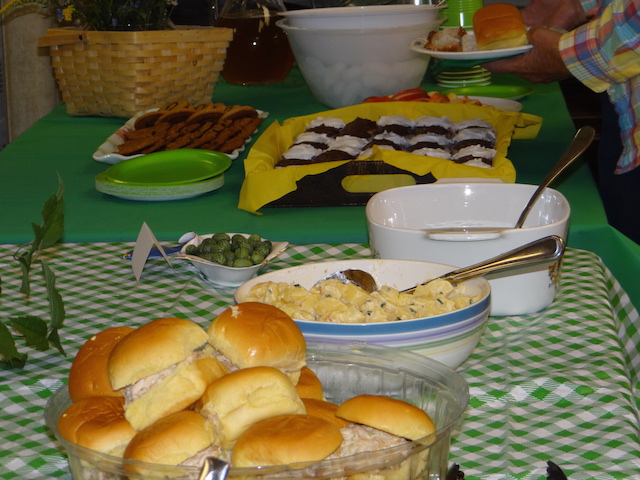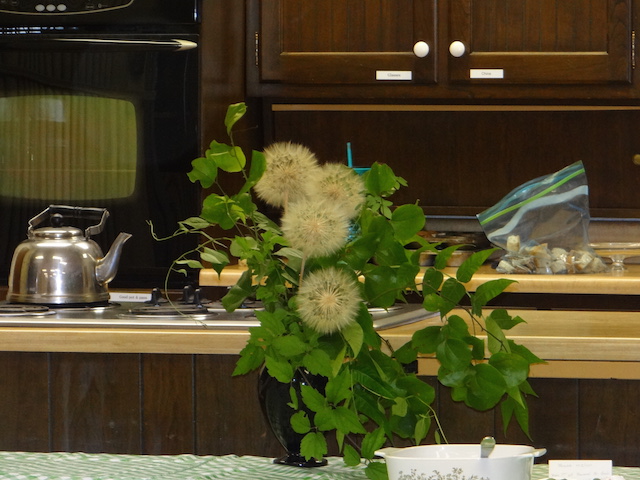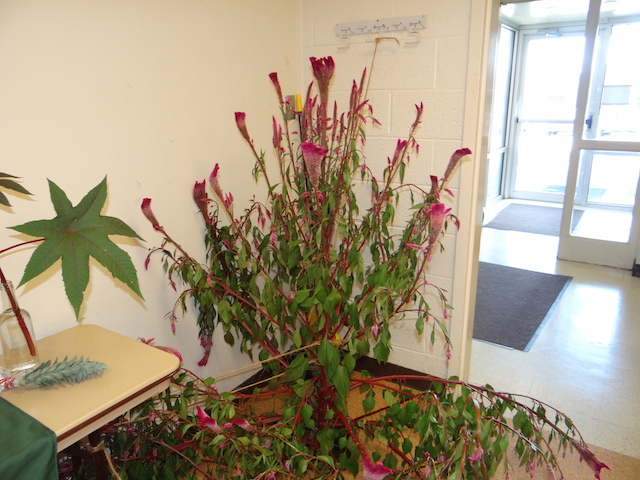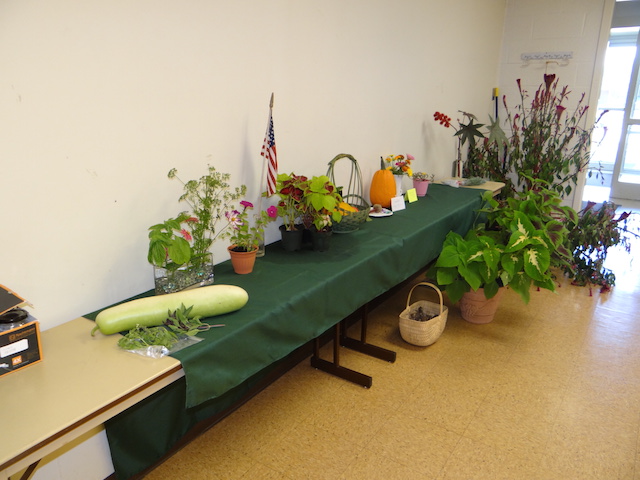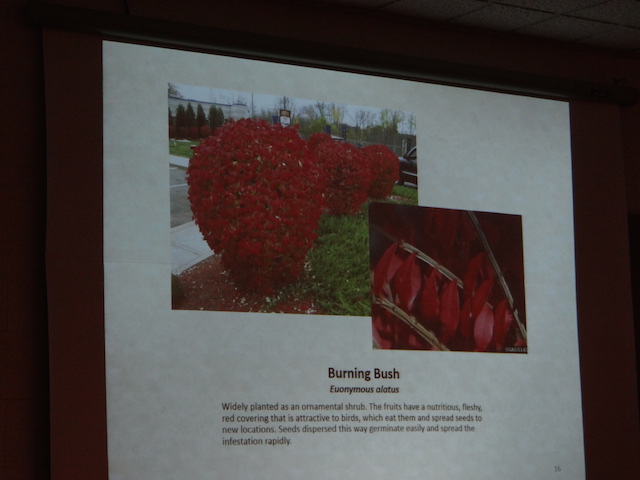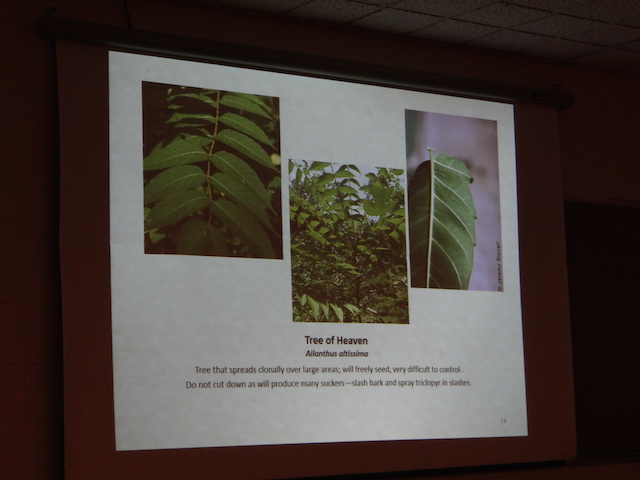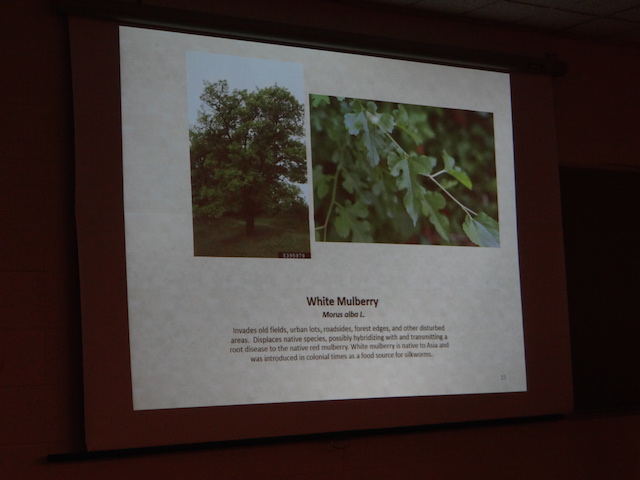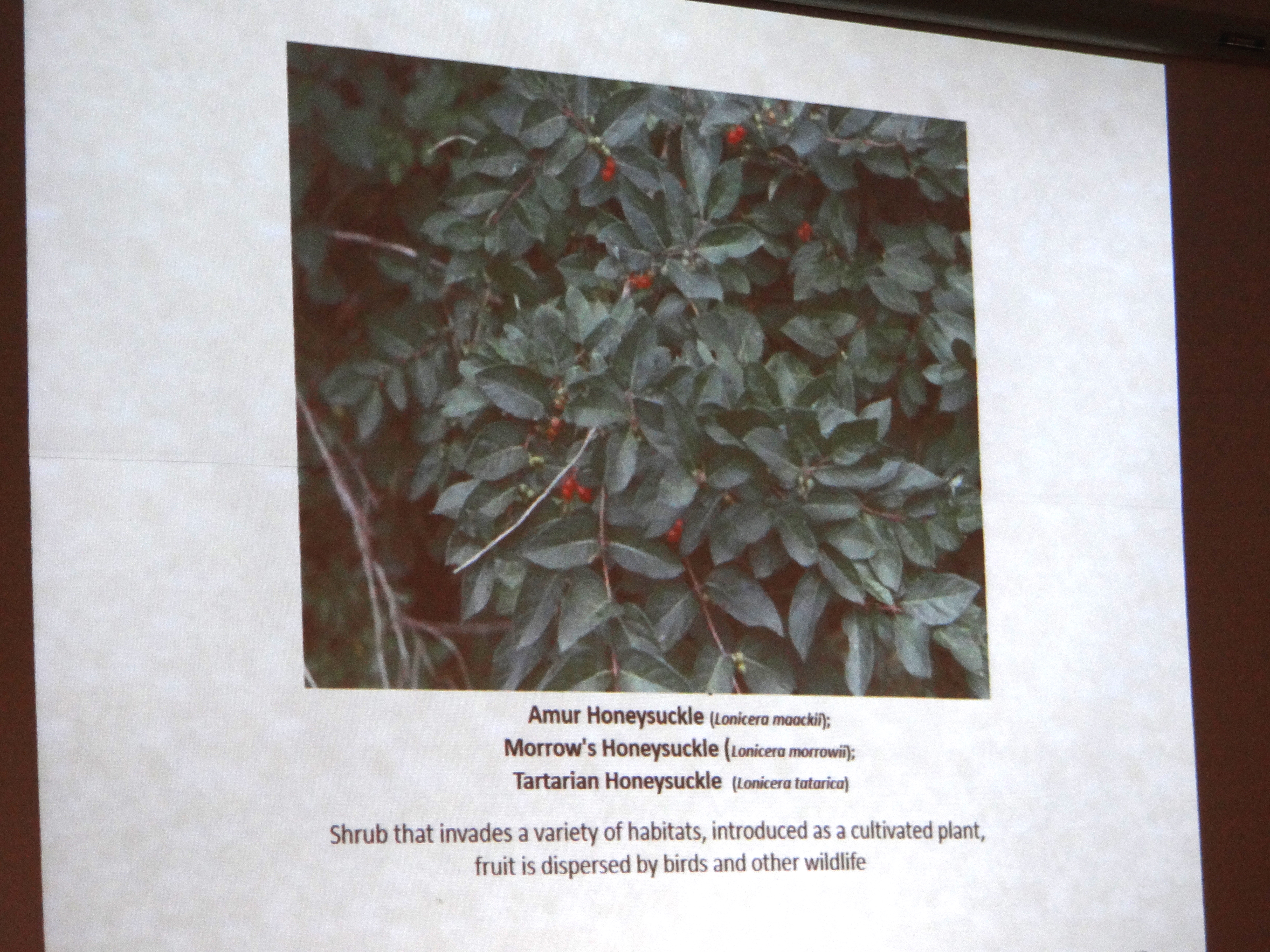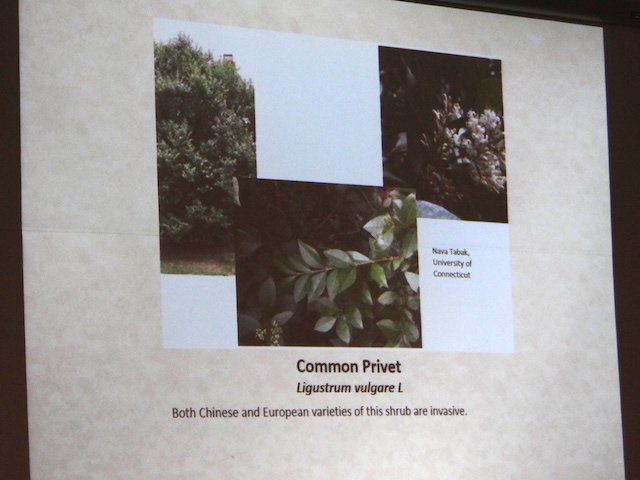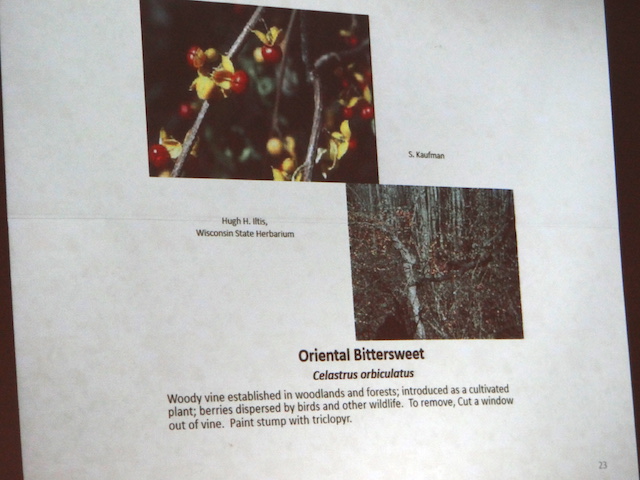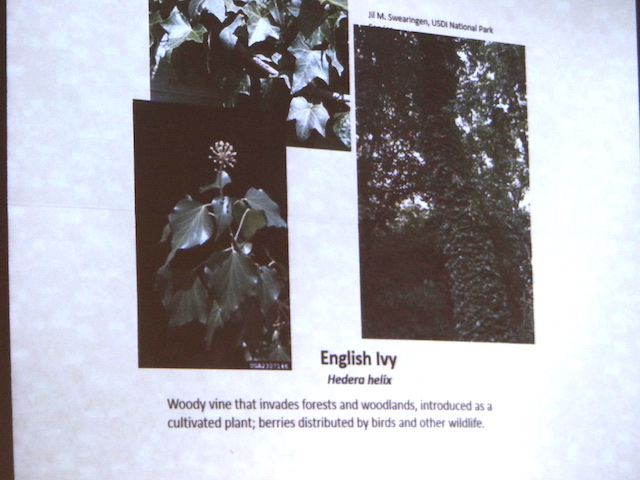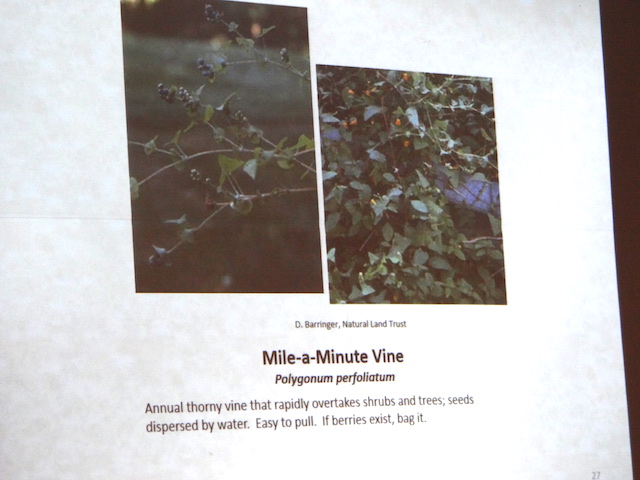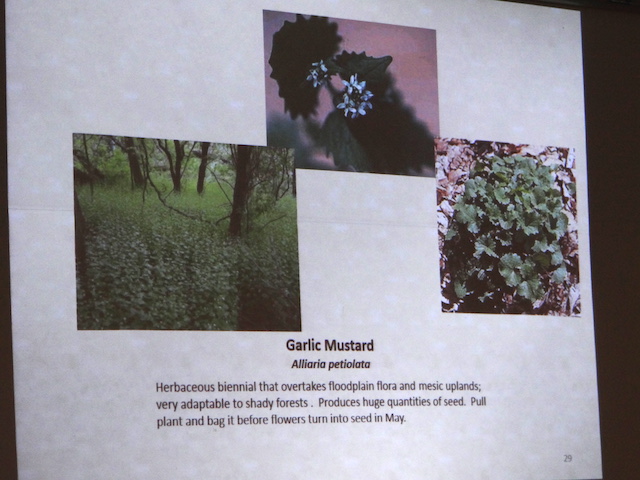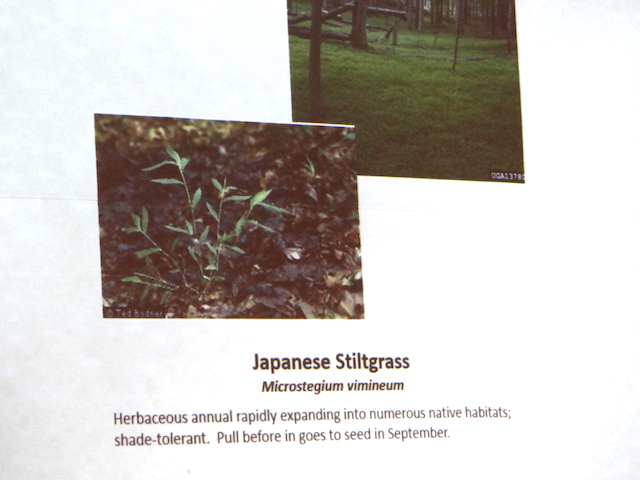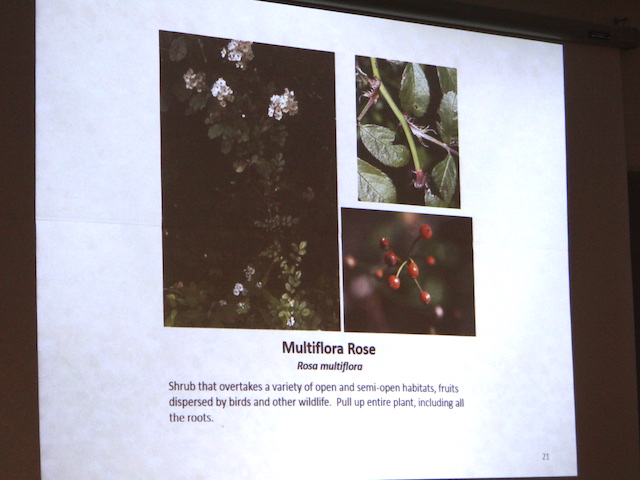We gathered at a room in the Ag Center in Westminster since the Union Bridge Community Center was being painted. Our fearless leader,President Marjorie Schiebel, was off gallivanting in China, so Brenda Powell, our VP took charge.
Yours truly was most afflicted with back spasms this day, so regretfully missed taking pictures of the hostess table and arrangement. Carmen did take a close up of the delicious repast for me.
We had been asked to bring in “something you grew from seed”. Among the unusual entries were Jan’s Castor Bean and Sue’s edible Indian Bottle Gourd. The clear winner was Julia’s monstrous Celosia which was propped in the corner of the room. Wow!
- Gigunda Celosia
- Table of seed growns
Our speaker was Master Gardener Carolyn Puckett. Unexpectedly and surprisingly I have no picture of her! I do recall we thought her coordinating multi-colored sandals and cheerful summery dress looked smashing together. Her theme was “Alien Invaders Among Us” wherein she addressed those foreign invasive plants that have made themselves quite at home in our area, how to recognize them (with her slides) and the problems. I am sorry to say that in my own yard, I have been unsuccessfully fighting the majority of the plants she introduced. They are here in our neighborhoods taking over.
Among the plants she addressed which should not be purchased and placed in our gardens, yet are often still proffered at nurseries: Burning Bush, Japanese Barberry, Japanese Honeysuckle, Bradford pear and Norway maple. I see these everyday along my alley walk. If you visit Columbia, MD, the Callery/Bradford pears are all over between the roadways in open areas, quite visible in the spring. Likewise, stay away from Porcelain Berry or the use of English Ivy as a ground cover. Tis not worth the aggravation!
Carolyn also addressed the invaders who have arrived by stealth or poor planning on someone’s part–Wineberry, Purple Loosestrife, Wavy-leaved Basket Grass, Japanese Knotweed and Stilt Grass. The problem is that these invaders smother, choke and out-compete our native plants (and other desirables).
Here are some of the slides she showed–a service to the public! Click for enlargement.
What ever shall we do?!
- In the fall, girdle the invasive trees and apply Triclopyr to the cut portion or in chop-slits on the trunk.
- Pull out the unwanted shrubs and perennial invasives.
- Responsibly use herbicides where needed.
- Plant native trees, shrubs, perennials and vines instead.

